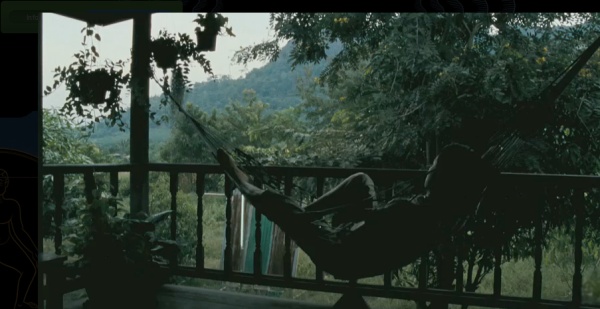2010 // Thailand // Apichatpong Weerasethakul // April 16, 2011 // Theatrical Print (Webster University Moore Auditorium)
The Palm d'Or-winning Uncle Boonmee is the first of Thai director "Joe" Weerasthakul's unconventional films that managed to elicit a response from me beyond, "Huh. Well that was... something." The director's most celebrated works prior to Boonmee, Tropical Malady and Syndromes and a Century, failed to establish any kind of emotional rapport with me as a viewer. I admired them as attractive and even mesmerizing cinematic objects, but little else. Not so with Boonmee, which I felt compelled to re-visit after encountering it at last year's St. Louis International Film Festival. I suppose that there's a lesson in there about giving challenging auteurs more than a single bite at the apple. Once in a while, something clicks into place with a given director and you can finally see what all the fuss is about.
I'm still sorting out exactly why I responded so strongly to Boonmee, but it's at least partly due to the elemental character of the film's themes, and also the frank manner in which those themes are presented. Frankness, of course, being a relative thing in a Weerasthakul outing. Compared to the opacity of Syndromes, this is pretty straightforward stuff. Boonmee is a film about mortality (among other matters) in which the primary thing that "happens" is the slow, lingering demise of the titular character. Theoretically morbid stuff, but Weerasthakul adds a palpable affection for sensory details, a matter-of-fact Buddhist sensibility, and a healthy serving of deadpan humor. The result isn't easy cinema, by any means. Boonmee features all sorts of curious events, and a couple of confounding digressions, principally a vignette about a Khmer or Siamese princess and her encounter with a talking catfish (?!). However, the film's disparate components just work, at least for this viewer, for reasons that are not entirely explicable. This sort of non-rational filmmaking claims David Lynch as its acknowledged grand master, but it's always exciting to see it emerge from other sources.
Weerasthakul's eye for arresting visuals has been apparent since I first encountered his works, but it took a second trip through Boonmee's eerie and eccentric pleasures for me to comprehend how crucial sound design is to the texture of the thing. The film boasts a luscious soundscape of natural and manmade din, much of it ambient and unremitting, from buzzing insects to roaring waterfalls to squawking televisions. When paired with the handsome but unadorned way that the director shoots everyday activities, the rich naturalism of the sound design seems to fill in the smells, flavors, and textures of Boonmee's world. When a restless, sweaty young monk savors a hot shower in the middle of the night, you can almost feel how refreshing it must be. When Boonmee and his sister-in-law sample tamarind honey straight from the honeycomb, I caught my mouth going slack at the thought of the sweet taste. Now that's transportive filmmaking.




